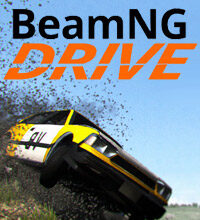
BeamNG.drive
All trademarks belong to their respective owners. Get GameBeyond the Wreckage: The Unsung Educational Power of BeamNG.drive’s Physics
At its core, BeamNG.drive is renowned for its incredibly visceral and realistic vehicular destruction. Witnessing a virtual car crumple with unparalleled fidelity is undoubtedly a primary draw. However, to pigeonhole this title as merely a “car crashing game” would be to profoundly miss its deeper, often unsung educational power. Beneath the satisfying crunch of bending metal lies a sophisticated soft-body physics engine that serves as an intuitive, dynamic classroom, offering a fascinating and accessible platform for understanding real-world concepts in engineering, mechanics, and physics.
A Digital Laboratory for Forces and Motion
BeamNG.drive’s physics engine isn’t just about spectacular damage; it’s a real-time, interactive simulation of how forces act upon objects. This makes it an invaluable, if unintentional, educational tool:
- Understanding Force and Impact: Players intuitively learn about the relationship between speed, mass, and impact force. Crashing a heavy truck into a wall at high speed vividly demonstrates the destructive power of kinetic energy far more effectively than any textbook diagram. The extent of deformation directly correlates with the energy dissipated during impact.
- Inertia and Momentum in Action: The game provides clear visual examples of inertia and momentum. Watching a vehicle continue its trajectory after hitting an obstacle, or seeing parts detach and fly off in their original direction, offers tangible demonstrations of Newton’s laws of motion. Try dropping a car from a great height – the impact forces are distributed across its structure in a way that truly brings physics to life.
- Crumple Zones and Structural Integrity: One of BeamNG.drive’s most compelling educational aspects is its detailed representation of crumple zones. Players can observe how different vehicle designs absorb impact energy by deforming in specific ways, protecting the cabin. Experimenting with head-on collisions versus glancing blows, or comparing modern cars to older, rigid designs, provides a practical understanding of passive safety features in vehicle engineering.
- Weight Transfer and Vehicle Dynamics: Beyond crashes, the game accurately simulates weight transfer during acceleration, braking, and cornering. Observing how a car’s suspension compresses or extends, or how its body rolls, helps players grasp concepts like center of gravity and its influence on handling. This is crucial for understanding vehicle dynamics, not just for driving, but for automotive design.
Engineering Principles in a Playful Environment
The game allows for hands-on experimentation with various engineering principles, making abstract concepts tangible.
- Material Deformation and Stress Points: Each vehicle in BeamNG.drive is modeled with thousands of interconnected “beams” and “nodes” that simulate its material properties. When subjected to stress, these beams bend, break, and deform, showing precisely where the weakest points are and how structures fail under pressure. This provides a visual representation of material science and structural engineering in action.
- Suspension and Damping: Changing suspension settings on a vehicle and then driving it over varied terrain offers immediate feedback on how different spring rates and damping coefficients affect ride quality and handling. This allows for intuitive experimentation with suspension engineering.
- Aerodynamics (Subtle but Present): While not its primary focus, the game’s physics does account for some aerodynamic forces, which become noticeable at extreme speeds or with custom vehicle designs. Players can experiment with vehicle shapes and observe their effects on stability and performance.
Beyond the Classroom: Intuitive Learning for All Ages
The beauty of BeamNG.drive as an educational tool is its accessibility and engagement.
- Visual and Experiential Learning: For many, particularly visual and experiential learners, watching and interacting with a simulation is far more effective than reading about concepts. The game’s highly detailed feedback loop makes abstract physics principles concrete and observable.
- Encouraging Scientific Inquiry: The sandbox nature of BeamNG.drive naturally encourages scientific inquiry. “What happens if I do this?” is the driving question, leading to countless experiments and discoveries. Players can design their own tests, vary parameters, and observe outcomes, mirroring the scientific method.
- Sparking STEM Interest: For young minds, the sheer spectacle of realistic crashes and complex vehicle behavior can ignite a passion for STEM (Science, Technology, Engineering, and Mathematics) fields. It offers a tangible, exciting entry point into disciplines that might otherwise seem abstract or daunting.
BeamNG.drive is far more than just a source of digital demolition; it’s a dynamic, interactive laboratory. By providing an unprecedented level of real-time physics simulation, it offers a powerful and engaging platform for learning fundamental principles of force, motion, engineering, and vehicle dynamics. It proves that sometimes, the most profound learning happens when we’re simply having a blast watching things break apart.
What real-world physics concept do you think BeamNG.drive demonstrates most effectively?
